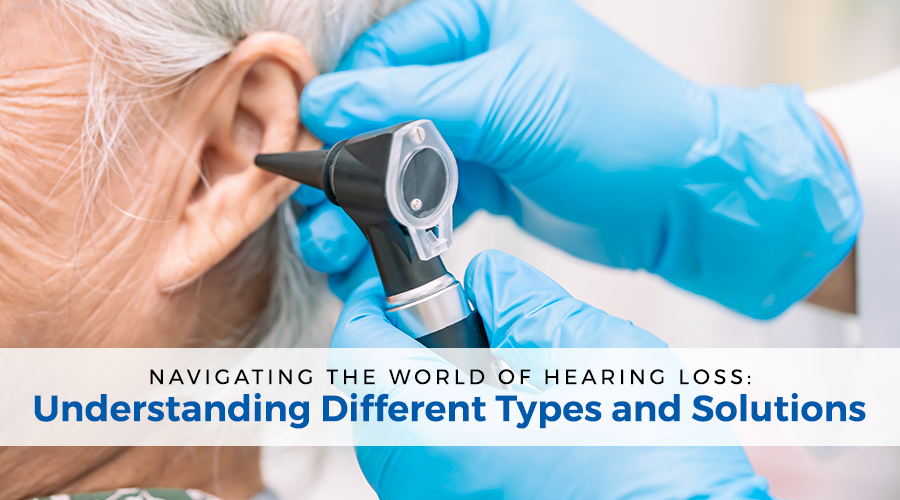Navigating the World of Hearing Loss: Understanding Different Types and Solutions

Hearing loss is a prevalent condition that affects millions of people worldwide, impacting their ability to communicate, connect, and engage with the world around them. However, navigating the complexities of hearing loss can be overwhelming, especially for those who are newly diagnosed or seeking solutions. In this blog post, we aim to shed light on the various types of hearing loss, their causes, and available solutions, empowering individuals to make informed decisions and seek appropriate support.
Understanding the Types of Hearing Loss: Hearing loss can be categorized into different types, each with its unique characteristics and underlying causes. The three primary types of hearing loss are conductive, sensorineural, and mixed.
- Conductive Hearing Loss:
-
- Conductive hearing loss occurs when sound waves are unable to reach the inner ear due to problems in the outer or middle ear.
- Common causes include ear infections, earwax buildup, perforated eardrum, or abnormalities in the ear canal or middle ear bones.
- Treatment options may include medical interventions, such as antibiotics for infections or surgical procedures to repair structural abnormalities.
- Sensorineural Hearing Loss:
-
- Sensorineural hearing loss results from damage to the inner ear (cochlea) or auditory nerve, impairing the transmission of sound signals to the brain.
- Causes of sensorineural hearing loss include aging (presbycusis), prolonged exposure to loud noise, genetics, and certain medical conditions or medications.
- Solutions for sensorineural hearing loss often involve the use of hearing aids or cochlear implants to amplify sound signals and improve auditory perception.
- Mixed Hearing Loss:
-
- Mixed hearing loss is a combination of conductive and sensorineural hearing loss, involving both problems in the outer or middle ear and damage to the inner ear or auditory nerve.
- Individuals with mixed hearing loss may require a combination of medical interventions and hearing devices to address both components of their hearing loss.
Exploring Solutions for Hearing Loss: Fortunately, advancements in hearing aid technology have provided individuals with a wide range of solutions to address various types and degrees of hearing loss. Modern hearing aids are discreet, comfortable, and equipped with advanced features designed to enhance auditory perception and improve quality of life.
- Behind-the-Ear (BTE) Hearing Aids:
-
- BTE hearing aids rest behind the ear and are connected to a customized earpiece that delivers sound into the ear canal.
- These devices are suitable for individuals with mild to profound hearing loss and offer flexibility in terms of programming and adjustment.
- In-the-Ear (ITE) Hearing Aids:
-
- ITE hearing aids are custom-molded to fit comfortably within the outer ear, making them discreet and cosmetically appealing.
- These devices are suitable for mild to severe hearing loss and may include features such as telecoil technology for improved telephone communication.
- Cochlear Implants:
-
- Cochlear implants are surgically implanted devices that bypass damaged parts of the inner ear and directly stimulate the auditory nerve.
- They are recommended for individuals with severe to profound sensorineural hearing loss who do not benefit from conventional hearing aids.
- Assistive Listening Devices (ALDs):
-
- ALDs are supplementary devices designed to enhance specific listening situations, such as watching television, talking on the phone, or participating in group conversations.
- Examples of ALDs include Bluetooth streamers, TV listening systems, and FM systems.
Conclusion: Hearing loss is a multifaceted condition that requires a nuanced understanding of its various types, causes, and solutions. By familiarizing oneself with the different aspects of hearing loss and available interventions, individuals can take proactive steps towards addressing their hearing needs and improving their overall quality of life. Whether through medical interventions, hearing aids, or assistive listening devices, there are options available to support individuals on their journey to better hearing and communication. At Ösel, we are committed to providing innovative solutions that empower individuals with hearing loss to reconnect with the world around them and live life to the fullest.
